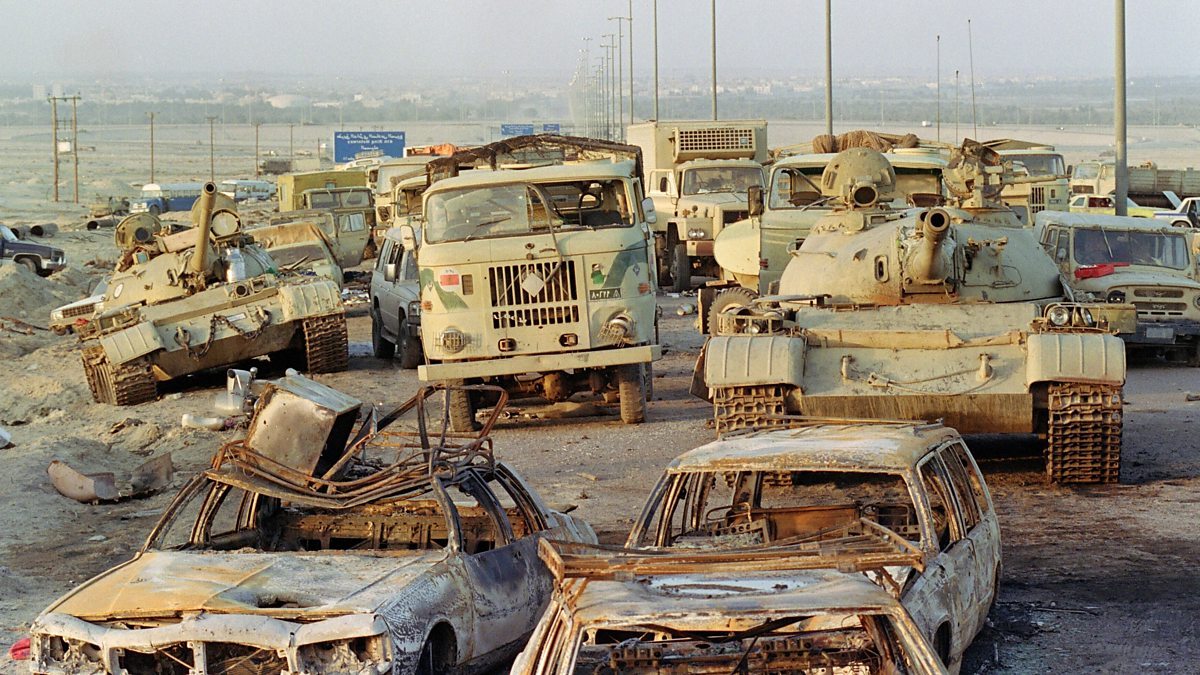
Why is Highway 37 called the Highway of Death? Highway 37, a 21-mile stretch in the Bay Area, connects Marin, Sonoma, Napa, and Solano counties. Despite its importance, it has earned the grim nickname "Blood Alley" due to its history of fatal car crashes. This road faces constant challenges, from natural hazards like flooding and ice to heavy congestion during commuting hours. Historical events, ghost towns, and military installations add layers to its story. Efforts to improve safety, such as barrier installations, have helped, but the road remains one of California's most dangerous. As it nears its centennial, plans focus on safety and environmental sustainability.
Key Takeaways:
- Highway 37, known as "Blood Alley," has a rich history and faces safety and environmental challenges. Future plans focus on safety improvements and environmental sustainability as it approaches its centennial in 2028.
- The highway's historical significance, environmental impact, and community involvement shape its future. Ongoing efforts to preserve historical sites and implement technological innovations aim to enhance safety and maintain its cultural heritage.
Highway 37: A Vital Yet Dangerous Corridor
Highway 37, stretching 21 miles through Marin, Sonoma, Napa, and Solano counties, is a crucial route in the Bay Area. Despite its importance, it has earned the grim nickname "Blood Alley" due to its history of fatal accidents. Let's explore the many facets of this notorious highway.
-
Location and Significance
Highway 37 connects Marin, Sonoma, Napa, and Solano counties, serving as a key transportation route for about 40,000 vehicles daily. -
Vulnerability
The highway faces constant challenges from nature, running parallel to the San Pablo Bay National Wildlife Refuge for nearly half its length. -
Fatal Crashes
Known as one of the deadliest roads in California, Highway 37's nickname "Blood Alley" reflects its tragic history of fatal car crashes. -
Named Segments
Two portions of the highway honor law enforcement members who died in crashes: California Highway Patrol officer Gary L. Hughes and Department of Justice special agent Randy Bolt.
Congestion and Historical Significance
Highway 37 is not just a road; it's a lifeline for commuters and a witness to history. However, its congestion issues and historical significance add layers to its story.
-
Congestion
Connecting Highway 101 to Interstate 5, Highway 37 experiences significant congestion, especially during commuting hours. -
Historical Significance
The highway was once home to the Skaggs Island Naval Communication Station, a key military installation from 1942 to 1995. -
Ghost Towns
Adjacent sloughs conceal remnants of ghost towns, with weathered structures still standing as a testament to the area's rich history.
Safety Concerns and Winter Hazards
Safety has always been a major concern on Highway 37. The lack of barriers and narrow lanes, combined with winter hazards, made it particularly dangerous.
-
Safety Concerns
The highway's narrow lanes and lack of barriers made it hazardous, especially at night when drivers struggled to gauge the distance between oncoming traffic. -
Winter Hazards
Winter brought additional dangers, with water on the roadway occasionally freezing into ice, causing spinouts and increasing the risk of accidents. -
Frankie Poulos Incident
In 1993, Frankie Poulos' tragic accident on black ice led to a grassroots effort to improve the highway, resulting in the installation of a barrier in 1995. -
Impact of Barrier Installation
Since the barrier's installation, fatal crossover collisions have significantly reduced, though drivers still occasionally bump against it.
Environmental and Economic Impact
Highway 37's proximity to the San Pablo Bay National Wildlife Refuge raises environmental concerns, while its role in the regional economy cannot be overstated.
-
Federal Highway Administration Study
A 2022 study warned that major sections of the route could be submerged by 2040 due to rising water levels. -
Restoration Efforts
Plans to destroy islands in adjacent sloughs aim to restore wetlands, stabilize soil, and reduce flooding risks. -
Economic Impact
The highway supports local businesses and industries, including agriculture and tourism, which are vital to the regional economy. -
Environmental Concerns
Construction and maintenance of the road can disrupt local wildlife habitats, necessitating sustainable practices.
Community Involvement and Future Plans
Local residents and community groups have played a crucial role in advocating for safety improvements and environmental sustainability. Future plans aim to ensure the highway's long-term viability.
-
Community Involvement
Active involvement from local residents and community groups has contributed to more comprehensive plans for the highway's future. -
Historical Events
The highway has witnessed significant historical events, including the operation of the Skaggs Island Naval Communication Station and the remnants of ghost towns. -
Cultural Significance
Serving as a connection between counties and providing access to historical sites, the highway holds cultural significance for the local community. -
Challenges Ahead
Despite improvements, Highway 37 still faces challenges like flooding and the need for sustainable practices. -
Future Plans
As the highway approaches its centennial in 2028, plans focus on safety improvements and environmental sustainability.
Technological Innovations and Historical Preservation
Advanced technologies and historical preservation efforts are essential for enhancing safety and maintaining the highway's rich cultural heritage.
-
Community Engagement
Regular consultations with residents and stakeholders are crucial for addressing concerns and ensuring that changes align with community needs. -
Technological Innovations
Advanced technologies like smart traffic management systems and real-time monitoring could enhance safety and efficiency. -
Historical Preservation
Efforts to preserve historical sites, including the Skaggs Island Naval Communication Station, are essential for future generations. -
Environmental Restoration
Restoring adjacent wetlands is crucial for environmental sustainability and reducing flooding risks.
Public Awareness and Emergency Services
Promoting safety through public awareness campaigns and ensuring the availability of emergency services are vital for reducing accidents on Highway 37.
-
Public Awareness Campaigns
Educating drivers about the road's risks and encouraging responsible driving practices can help reduce accidents. -
Emergency Services
Ensuring that emergency responders have the necessary resources and minimizing response times can save lives. -
Infrastructure Upgrades
Regular upgrades, including repairing damaged sections, improving lighting, and enhancing signage, are necessary for maintaining safety.
Community Support and Technological Solutions
Community support and technological solutions play a crucial role in enhancing the safety and efficiency of Highway 37.
-
Community Support
Engaging with local communities is vital for the success of initiatives aimed at improving the highway. -
Technological Solutions
Implementing intelligent transportation systems (ITS) can provide real-time traffic updates, optimize traffic flow, and reduce congestion.
Historical Context and Cultural Heritage
Understanding the historical context and cultural heritage of Highway 37 is essential for appreciating its significance and ensuring its preservation.
-
Historical Context
The road has played a crucial role in the region's development, from its early days as a military installation to its current status as a vital transportation route. -
Cultural Heritage
The remnants of ghost towns and historical sites along the highway serve as a reminder of the area's rich history and cultural significance.
Environmental Impact and Community Involvement in Planning
Efforts to mitigate the environmental impact and involve the community in planning are crucial for maintaining the health of the surrounding ecosystem and ensuring the success of future initiatives.
-
Environmental Impact
Construction and maintenance of the highway have an environmental impact, necessitating efforts to restore wetlands and reduce pollution. -
Community Involvement in Planning
Involving the local community in planning ensures that changes align with residents' needs and concerns, building trust and ensuring success.
Historical Preservation Efforts and Technological Innovations in Safety
Preserving historical sites and using advanced technologies to enhance safety are essential for maintaining the highway's rich cultural heritage and reducing accidents.
-
Historical Preservation Efforts
Ongoing efforts to protect the remnants of the Skaggs Island Naval Communication Station and other historical landmarks are crucial for future generations. -
Technological Innovations in Safety
Advanced technologies like smart traffic management systems and real-time monitoring can significantly enhance safety and improve emergency response times.
Public Education Campaigns and Future Development Plans
Public education campaigns and future development plans focus on promoting safety and ensuring the long-term viability of Highway 37.
-
Public Education Campaigns
Educating drivers about the road's risks and encouraging responsible driving practices can help reduce accidents. -
Future Development Plans
As the highway approaches its centennial in 2028, plans focus on safety improvements and environmental sustainability guided by a comprehensive study by the Federal Highway Administration.
The Road Ahead for Highway 37
Highway 37, often called "Blood Alley," has a storied past filled with both tragedy and triumph. This 21-mile stretch is crucial for connecting Marin, Sonoma, Napa, and Solano counties, yet it faces significant challenges. From fatal crashes to environmental concerns, the road's history is a mix of danger and importance. Efforts to improve safety, like installing barriers, have made a difference, but flooding and congestion remain issues. Community involvement and technological innovations are key to its future. As Highway 37 nears its centennial in 2028, plans focus on balancing safety, environmental sustainability, and historical preservation. This road isn't just a route; it's a vital part of the Bay Area's identity. Addressing its challenges will ensure it remains a safe and essential corridor for years to come.
Frequently Asked Questions
Was this page helpful?
Our commitment to delivering trustworthy and engaging content is at the heart of what we do. Each fact on our site is contributed by real users like you, bringing a wealth of diverse insights and information. To ensure the highest standards of accuracy and reliability, our dedicated editors meticulously review each submission. This process guarantees that the facts we share are not only fascinating but also credible. Trust in our commitment to quality and authenticity as you explore and learn with us.


